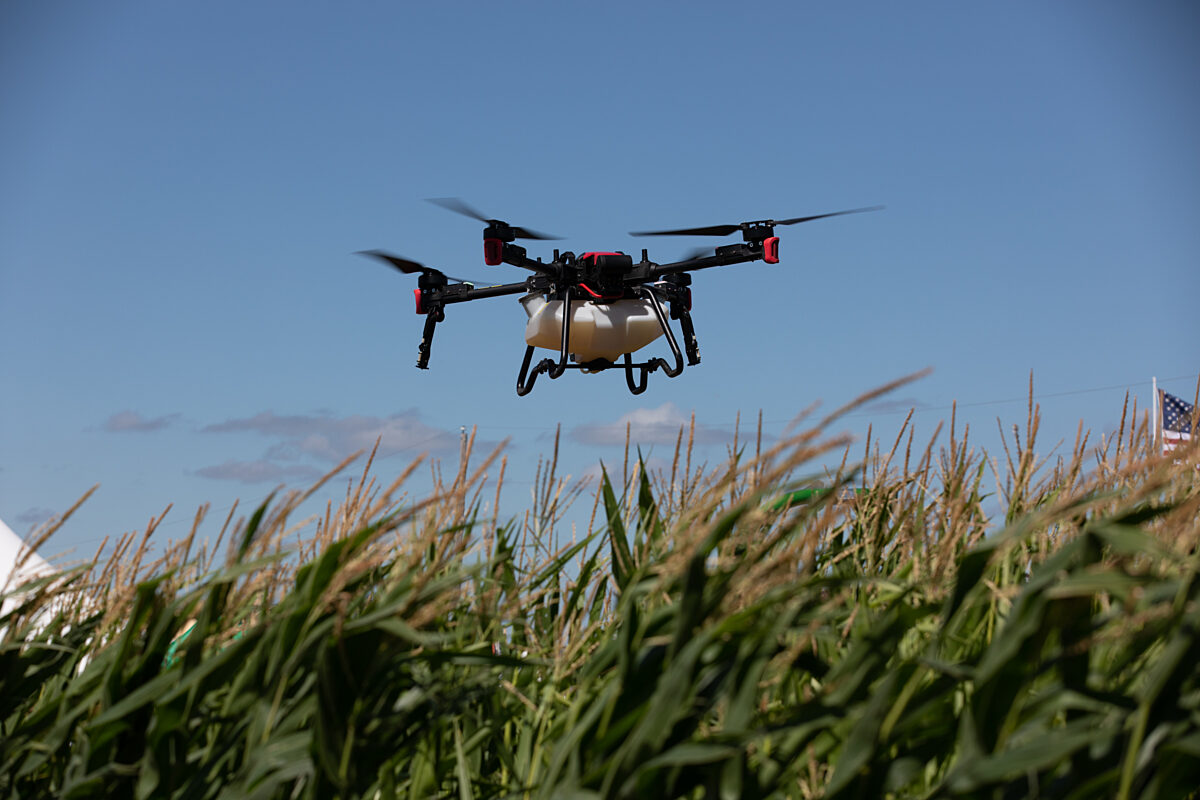Drones Bring Broad Opportunities and Implications for Agriculture
Guest Author
Special Contributor to FB.org

photo credit: AFBF Photo, Philip Gerlach
Guest Author
Special Contributor to FB.org
Download a 60-second audio version of this column from here
Though in their infancy, rapidly evolving Unmanned Arial Systems, commonly known as drones, are stimulating new visions for farms of the future.
Some visions may seem almost cartoonish – tractors with no drivers, the air above farm fields abuzz with little drones closely monitoring the health of individual animals or plants, or even little bee drones pollinating crops.
Drones and their integration with other technologies and management tools are stimulating a new agricultural revolution, with opportunities not only for farmers and others involved with agricultural production, but educators, food processors and markets, consumers and the activist community.
A trade group representing UAV manufacturers and users, the Association for Unmanned Vehicle Systems International, predicts agriculture will account for about 80 percent of the commercial market. Some estimate the market will create more than 100,000 jobs by 2025, with hundreds of millions of dollars in impact.
While most farmers cannot fly drones legally yet, their desires already range from the sky high, to the pragmatic. Many already are investigating drones to help reduce costs, labor needs and crop inputs, increase yields and productivity, monitor animal health and welfare, and meet targets for sustainability and reducing environmental impacts.
Other uses may be more simplistic, such as quickly and accurately tracing irrigation systems to find leaks and assess efficiency, delivering meals to workers or parts for broken equipment in fields, or checking on the welfare of a farmer who didn 't come home on time and hasn 't answered the phone.
The activist community – especially those involved with animal rights and against large-scale farming – is equally eager to adopt drone technology.
In Australia, which is already ahead of the U.S. in the use of drones for agriculture, an animal activist group acquired drones to monitor cattle and sheep operations for indications of animal abuse. The group reportedly received donations to buy its first helicopter-type drone for $14,000, and its members then completed a training program. They also use drones to verify claims made by free-range egg producers. As long as the drones are operated under the country 's aviation standards, the surveillance techniques may not violate the country 's trespassing regulations.
Major groups in the U.S. have already launched significant fundraising efforts to purchase drones and use them to monitor hunting, wildlife management, livestock production and environmental impacts of farming.
Washington, D.C.-based author and blogger, Will Potter, recently raised $75,000 through crowd sourcing to buy drones and other equipment to investigate animal agriculture. He openly admitted that he intends to use his project to work around state laws that restrict footage or images gathered by hidden cameras in undercover investigations. While drones cannot be used for surveillance inside buildings, Potter plans to film the magnitude of large farms to try to show their environmental impacts. In a similar project, documentary filmmaker Mark Devries, captured video footage of a large-scale hog production in North Carolina. His drone footage has attracted more than four million views on YouTube.
Of course, these types of activities are still illegal, unless the producers have a clearly outlined exemption from the FAA to fly their drones. Drone technologies are in their infancy, as is the regulatory process that will govern not only the aviation rules to fly them, but also privacy guidelines for gathering and using data and imagery obtained by drones.
Increasingly, food processors, retail grocers and restaurant chains will incorporate drones to monitor and verify animal welfare or crop production standards specified in their supply chain agreements. Drones also will be used by regulators, academic researchers, agricultural input suppliers and consultants. Although those likely would be done knowingly, and contractually, with farmers, the legal and regulatory structure will need to evolve to protect privacy.
The technologies exist. All involved with agriculture can use them to advance issues and positions on farming practices. Farmers can use them to tell their stories … their way.
Robert Giblin writes, speaks and consults about agricultural and food industry issues, policies and trends.
Trending Topics
VIEW ALL